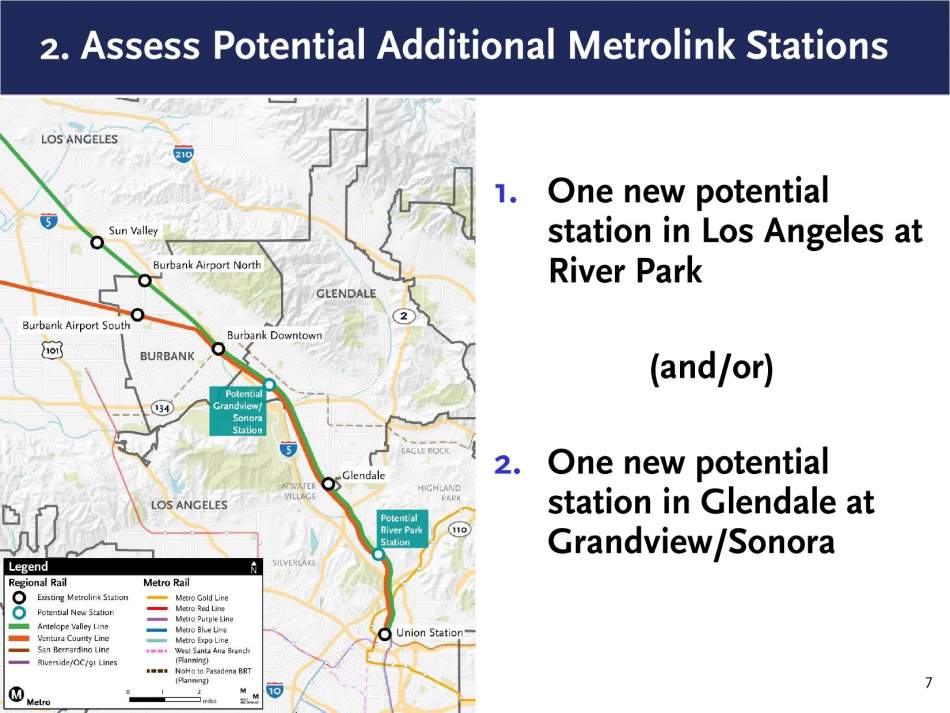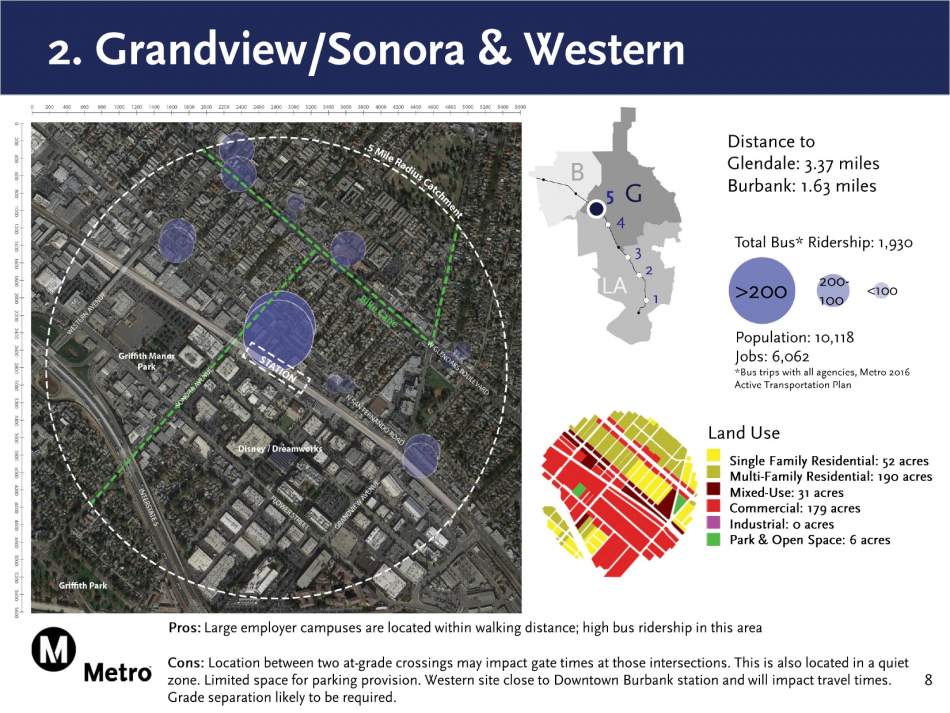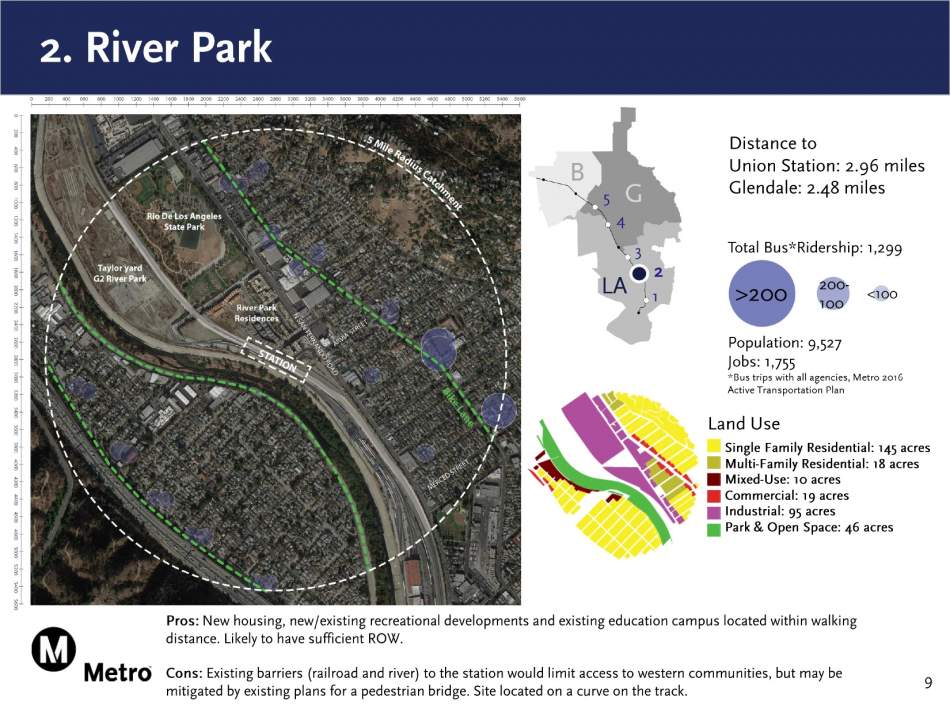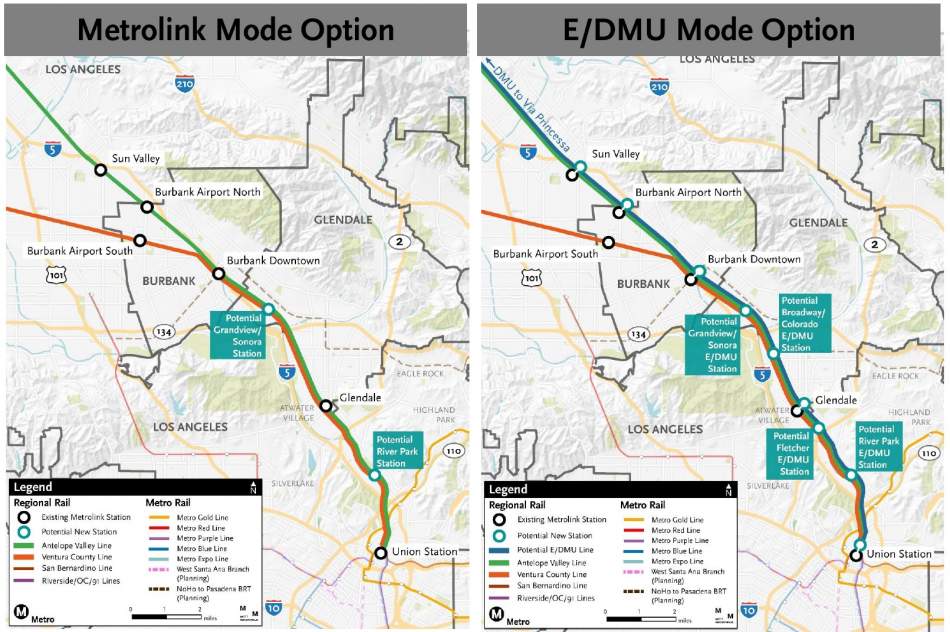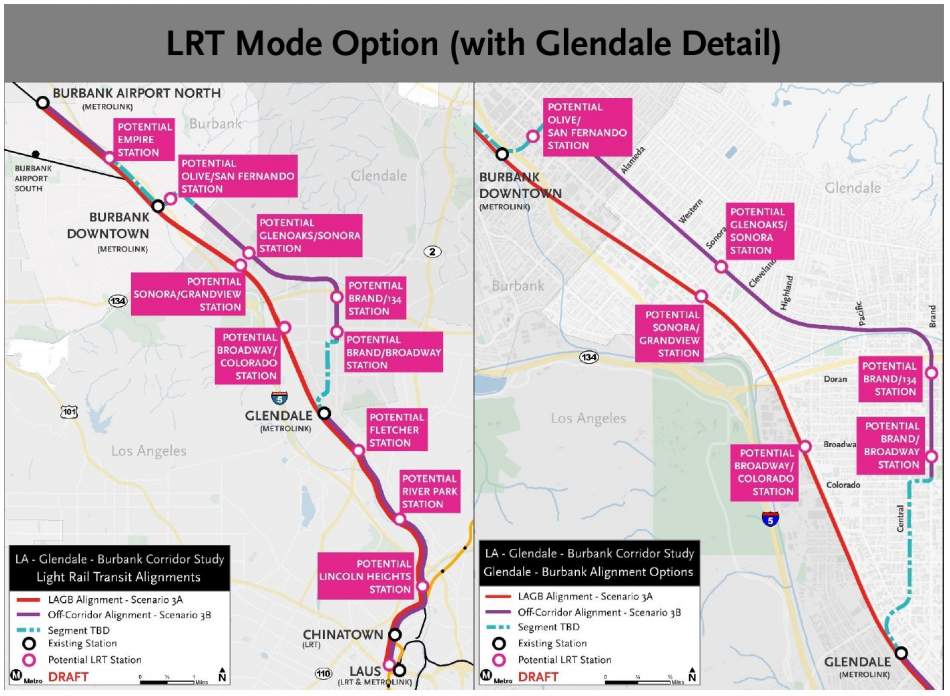At its meeting today, the Eco-Rapid Transit Board is scheduled to weigh in on a study of improved rail service between Hollywood Burbank Airport, Glendale and Union Station in Downtown Los Angeles. The study, which was initiated in 2016, will examine the feasibility of adding more frequent service and infill stations along the corridor.
The report to the Eco-Rapid Transit Board notes that augmenting existing offerings - which consist of Metrolink and Amtrak trains - could better serve transit-dependent residents while accommodating future population and employment growth. Currently, service patterns between Burbank and Union Station are irregular, presenting opportunities for improvement. Trains do not always arrive at set headways during weekdays, and service is limited in off-peak hours and on weekends.
Metro's study is considering three transit modes:
- Metrolink commuter rail;
- Diesel or Electrical Multiple Units, which can use the same tracks as Metrolink trains, but are capable of faster acceleration and deceleration; and
- Light rail as seen on Metro's Blue, Gold, and Expo Lines.
An expansion of existing Metrolink service on the corridor could come with the addition of two infill stations.
The first would be located in north Glendale, midway between Sonora and Grandview Avenues. There are approximately 10,000 residents living within a half-mile radius of the proposed station site, as well as 6,000 jobs - largely due to an adjacent studio campus occupied by Dreamworks and Disney. The population and jobs density, as well as the nearly 2,000 daily bus rides originating from this area, count in its favor.
Counting against the Sonora/Grandview site are its cramped surroundings. Located between two at-grade crossings and within a quiet zone, a station here would likely need to be grade separated, thus raising construction costs.
The proposed River Park Station would be located adjacent to a new housing development of the same name. Both are adjacent to the Southern Pacific Railroad's former Taylor Yard, which is to be transformed into park space through the L.A. River revitalization plan.
The surrounding area is home to approximately 9,500 residents and sits in close proximity to the L.A. River and other recreational spaces. A location along the eastern bank of the river could potentially limit access from the west bank, though a planned pedestrian bridge at the Taylor Yard could mitigate this problem.
Diesel or Electrical Multiple Unit service would travel along the same corridor, with potential for additional infill stations at Broadway/Colorado in Glendale and Fletcher Street in Atwater Village.
Were Metro to build a light rail line along the Burbank-Glendale-Union Station corridor, trains would leave the existing right-of-way to travel through the commercial core of Glendale. A conceptual alignment shows trains veering off of the right-of-way after passing Downtown Burbank, then traveling south along Glenoaks Boulevard, Brand Boulevard, and Central Avenue before rejoining the existing corridor.
The route of the conceptual light rail line would run along a near-identical route to a proposed streetcar system that the City of Glendale has been studying independently.
Of the three alternatives being studied, Metrolink service is likely to be the least expensive to implement - with new locomotives estimated to cost $7 million each and new passenger cars $2 million. Trains travel up to 79 miles per hour and have a capacity of 840 seated passengers with six-car sets.
Diesel and Electrical Multiple Unit service would likely be more costly, citing the $290-million budget for the similar Redlands Passenger Rail Project. DMU and EMU trains run at speeds up to 79 miles per hour and seat 450 passengers in three-car sets.
Light rail - which would require significant segments of newly-built right-of-way - would be the most expensive - likely in excess of $250 million per mile. Likewise, light rail is the slowest option - with a maximum speed of 65 miles per hour - with capacity for 405 seated passengers in a three-car train.
Moving forward, continued outreach meetings for the study are scheduled for March and April. A final report to the Metro Board is anticipated in either the Summer or Fall of 2019.
The efforts to improve the Burbank - Glendale - Los Angeles corridor is occurring concurrently with a separate plan by Metrolink to implement service improvements system-wide. The project, which could cost $10 billion, would include electrification for a substantial portion of Metrolink's more than 500-mile network.
Union Station, the southern endpoint of the corridor, is also poised for a series of upgrades that would add run-through tracks above the US-101 Freeway and create a new passenger concourse.
- Metro Looks to Improve Rail Service Between Burbank and DTLA (Urbanize LA)
- Los Angeles - Glendale - Burbank Feasibility Study (Eco-Rapid Transit, h/t/ Transit Pass LA)





